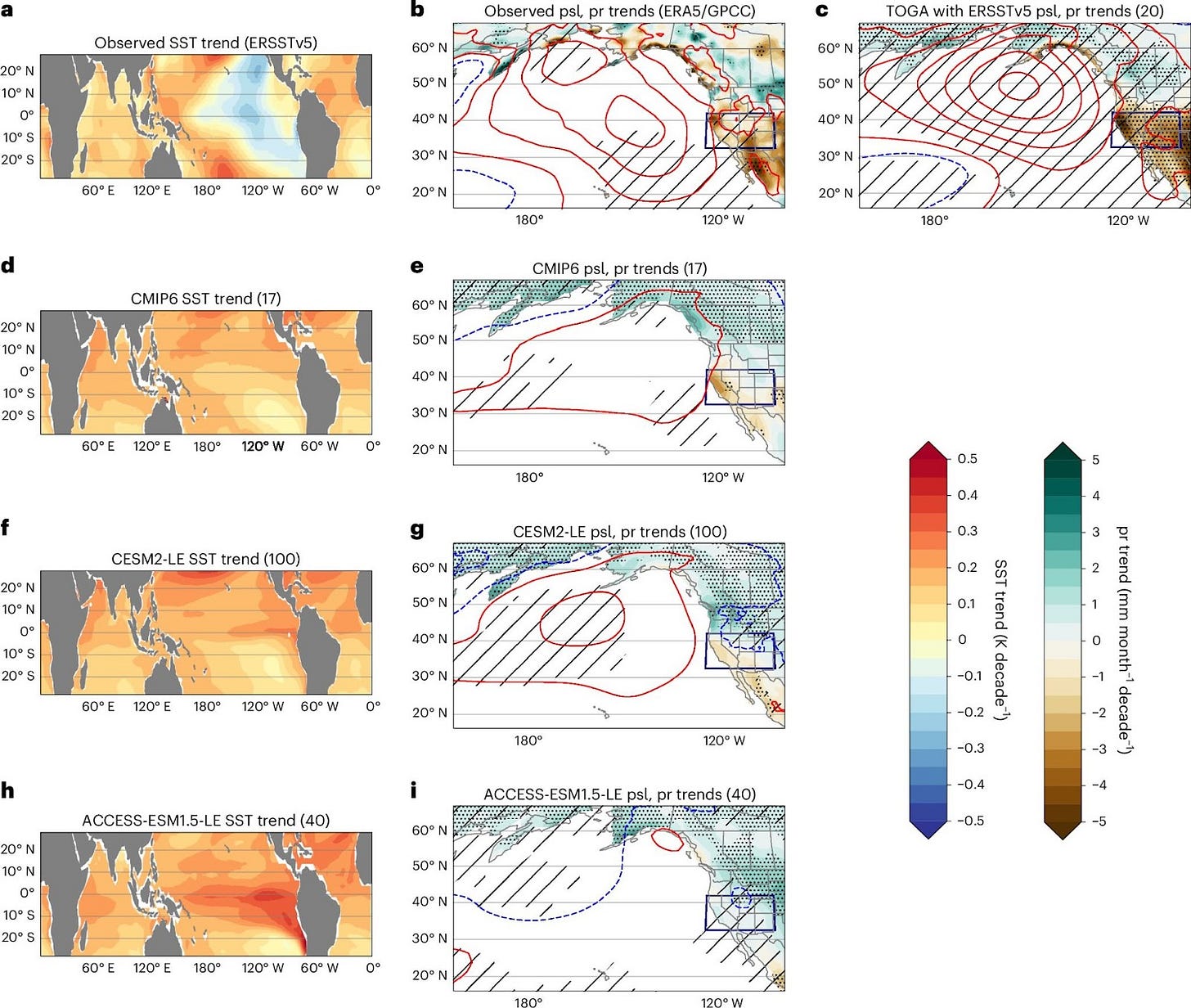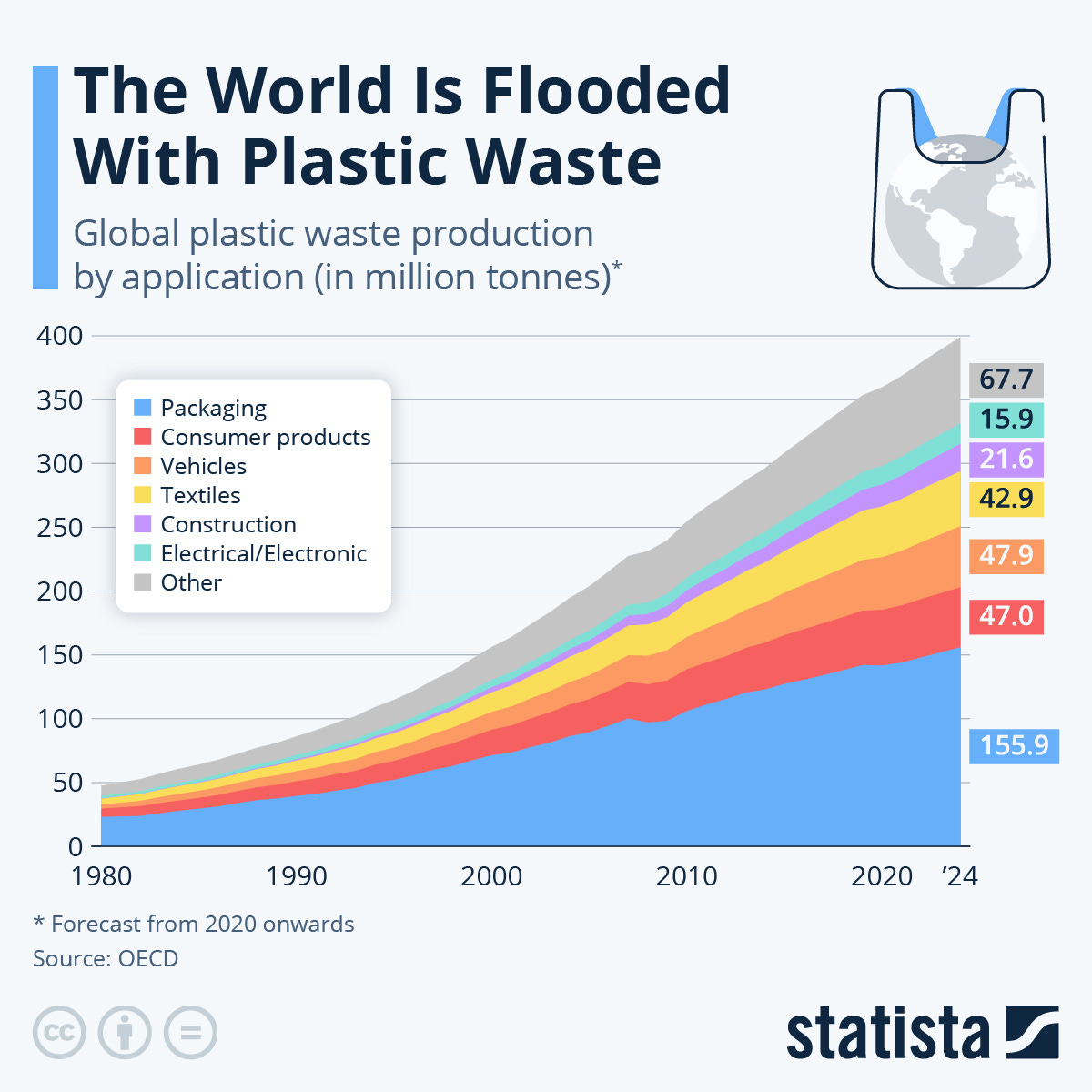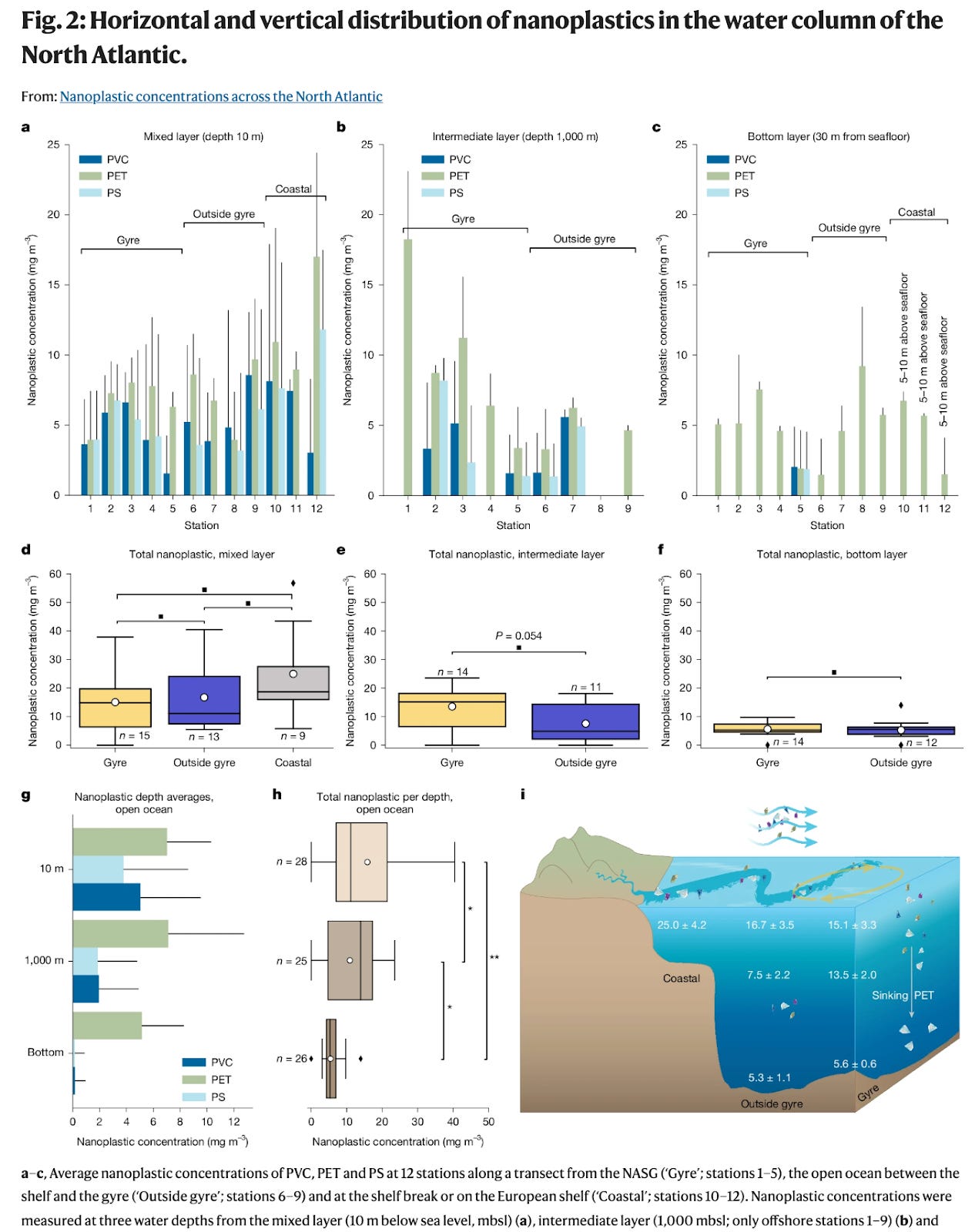Last Week in Collapse: July 6-11, 2025
Flooding, permanent El Niño warnings, PFAS, worsening wealth inequality, energy predictions, a death by plague, and crimes against humanity. “Disaster reveals what the world has already become.”
Last Week in Collapse: July 6-11, 2025
This is Last Week in Collapse, a weekly newsletter compiling some of the most important, timely, useful, soul-crushing, ironic, amazing, or otherwise must-see/can’t-look-away moments in Collapse.
This is the 185th weekly newsletter. You can find the June 29-July 5, 2025 edition here on Reddit if you missed it last week. Thank you for subscribing to the Substack.
——————————
There is “No hope for Pyrenean glaciers” according to the title of a preproof study to be published in Annals of Glaciology later in July. Scientists estimate that “by 2034 the Pyrenees will be ice-free. If extreme summers like 2022 and 2023 recur this could happen even earlier….just three years of extreme climatic conditions, such as those observed in 2022 and 2023, could be enough to trigger their ultimate disappearance.” Meanwhile, the Perito Moreno Glacier in Argentina, which for many years resisted melting like other glaciers worldwide, is now showing signs of terminal decline; it is now thinning at a rate of 8 meters per year, twice the rate from four years ago.
Damage Report from Texas where flash flooding two weeks ago swept away dozens of people and inundated homes, vehicles, and rivers. The death toll is now at least 129, with 150+ missing; the White House press secretary called the disaster “an act of God.” Experts blame the freak flood event on a combination of the natural hilly terrain of the area, warmer & wetter air, and the timing of the flood which began around 3:00 AM (as well as the flood warning, which came around midnight).
It was not just Texas that saw massive flooding. New Mexico, North Carolina, and Illinois also saw 1-in-1000-year rainfall events—some meteorologists say that the U.S. saw a dozen such floods in a single week—based on USGS water gauges, anyway. Across the country’s many water tracking systems, there have been 30 such events so far this year—compared to 35 in all of 2024.
After 4 years, Western Australia has conceded that eradication of the shot-hole borer, an invasive fungus-spreading beetle, is impossible. The government will now shift to managing the population of this pest as best they can. In Iraq, where years of Drought and Turkish hoarding of water are precipitating a worsening water crisis, the people want to build more dams to store water for emergencies. The problem: Türkiye has made releasing more water downstream into Iraq conditional on awarding dam-building contracts to Turkish companies, continuing the cycle of dependence on Turkish benevolence.
Switzerland’s climate monitoring body announced that two Fridays ago, 4 July, marked “glacier loss day,” the annual observation of the point at which all added glacier mass from the previous winter melted away. From now until the first snowfall—probably October—all new melt will eat away at ancient ice deposits. A paywalled study in Nature Climate Change lists the 10 biggest threats to river deltas worldwide: “climate change, sea level rise, deforestation, intense agriculture, urbanization, impoundments, land subsidence, ground water extraction, flood defenses, and resources mining.” Unfortunately the study is locked and further analysis is not possible.
Forest fires forced the closure of Marseille’s airport. A survey of Bangladesh’s 10 biggest rivers found that four are functioning at below-sustainable water levels—and the other six are approaching the same threshold. China’s hot summer has begun a couple weeks earlier than usual, and the demand for energy-intensive air conditioning is rising. In Moscow, a vicious storm took down scores of trees and a communication tower, though none were killed. In Gujarat, India, a long-neglected bridge partially Collapsed into the Mahisagar River.
A paywalled study in Nature Geoscience has established a link between the warming of the tropical ocean with decreased precipitation in the U.S. Southwest. The authors write that the trend has been in existence since at least the 1980s, beginning “the fastest southwestern US soil moisture drying among past and future periods of similar length due to the combination of this forced precipitation decline and anthropogenic warming.”
Temperatures in the Mediterranean Sea hit a third consecutive week of record highs. Part of Sri Lanka hit a new minimum high with temperatures almost reaching 29 °C (84 °F); ditto for Japan, though their temperatures were a couple degrees cooler. Southern England is gearing up for water restrictions amid the driest summer in 100+ years. In part of Yunnan province, China, 7,000+ were evacuated because of flooding. In Bangladesh, 70,000 families were isolated from recent flooding.
In New Mexico, another wave of flooding killed three people, a few days after their other historic floods; North Carolina experienced a similar thing. Kenya set a new July minimum temperature of 27.8 °C. A problematic algal bloom off the coast of South Australia continues growing, causing damage to the region’s marine life and fishing industry. Recent analysis from several European and American climate agencies say that June 2025 was the third warmest June on record—after 2024 and 2023.
A wildfire near the Grand Canyon forced the closure of part of the site; one man died from heatstroke in the Canyon, too. Yet another paywalled study came out last week, telling of how rapid deoxygenation (6x the global average) is affecting the Arctic Ocean—which is itself warming about 4x faster than the global average.
Elsewhere on earth, climate scientists fear the emergence of “permanent El Niño” conditions when sea surface temperatures pass an unknown tipping point. The Oceanic Niño Index—the 3-month average sea surface temperature (SST) in part of the Pacific, compared to the long-term average SST—is trending upwards.
——————————
President Trump’s tariffs were delayed—again; the new implementation date is 1 August. Other tariffs, like the 50% import tax on foreign steel & aluminum, are already in effect. Blanket tariffs are currently expected to be at least 35% on Bangladeshi imports, 25% from Japan, 30% from South Africa/Mexico/EU, 25% from South Korea, and on and on. An extra 10% tariff is being threatened for countries “aligning themselves with the Anti-American policies of BRICS,” according to Trump. Brazil is reportedly planning reciprocal tariffs of 50%. China’s supply chains are quickly adapting to the new trading opportunities—and increasingly weaponizing rare earth minerals. Some observers say there are no winners, but smaller countries, lacking leverage & torn between the two large trading giants, are suffering the most.
Economists are pointing to large private credit institutions as a source of potential instability in the U.S. economy. Looser standards for borrowing may result in higher default rates—and incentives for lenders push them to lend money to make profit, even on riskier investments. Recent history reminds us that the bundling & sale of shit loans ended up shocking the global economy in 2008-09. Meanwhile, poverty and financial inequality in France have reached 30-year highs; over 15% of the population is now in poverty, according to government figures. As many people have said, young people are delaying important events in life—and so too are older people delaying retirement—because of financial troubles.
A new company has claimed the spot of world’s largest market cap: NVIDIA passed the $4T (USD) threshold, becoming the world’s most valuable company. The tech company has soared in recent years over demands for its high-end GPUs, used mostly in AI, but also in crypto mining, gaming, and other tech applications. White-collar and/or entry-level jobs continue to be replaced by AI uses. Meanwhile, the AI Grok, one week after devolving into open Nazi propaganda, is set to be loaded onto some 5M Teslas around the world next week. Others speculate that Open AI is heading for “a kind of subprime AI crisis” after being allegedly valued at far, far above its actual net worth.
The ongoing U.S. measles outbreak has now reached 33-year highs, with 1,285+ cases logged since January 1st. More than half the cases have been reported in Texas. Only 12 states have yet to record a measles positive case, and the United States is likely to lose its official “elimination status” for the virus. Some Canadians are urging the government not to trust American data on disease outbreaks anymore.
A study in Nature examined “16,325 known plastic chemicals” to map “chemicals of concern” among them. The result: well, “9% of chemicals in the inventory lack basic structural information, 25% lack chemical property data, more than 50% miss details on their functions or presence in plastics, and 66% have no hazard information.” In other words, there are massive gaps in the data on thousands of plastic compounds. At least 4,200 plastics were confirmed to be of concern for the damage they can cause to the environment or to human health.
A study on nanoplastics—smaller than 1 µm (1 micrometer = one 10,000th of 1 centimeter)—in the North Atlantic Ocean determined that “nanoplastics comprise the dominant fraction of marine plastic pollution.” Waves, microbes, and particularly degradation caused by sunlight causes microplastics in the ocean to break up into nanoplastics. Interestingly, the researchers state that “the dispersion of nanoplastics is not governed by buoyancy properties” and they “estimate that the mass of nanoplastic {in the North Atlantic} may amount to 27 million tonnes.” One of the authors stated that nanoplastics “ are present everywhere in such large quantities that we can no longer neglect them ecologically.”
Research on 117 bodies of water across England found 94% of them tested for unsafe levels of PFAS chemicals. PFOS, a subclass of PFAS, were also 322x higher than safe levels for aquatic life. Three-hundred and twenty-two times above the safe level. There’s no coming back from this.
In Alsace, France, some 42,000+ tons of toxic waste lie buried deep underground—and they are [entering a network of old potash mine tunnels. Authorities are warning that Collapse of the mining passages —which they say might happen in 2027 or 2028—could pollute a water table that is essential to part of France, Germany, and Switzerland. Meanwhile, in Iowa, Drought and worsening fertilizer runoff are limiting the amount of safe drinking water made available for humans.
A person in Arizona died of the plague, Yersinia pestis. The U.S. CDC ended its emergency response status to the bird flu on Monday, and will no longer report HPAI infections in animals—a task now delegated to the Department of Agriculture.
OPEC+ oil production is expected to decrease over the next four years, even as worldwide demand (105 million barrels/day in 2025) is projected to rise (111.6 bpd by 2029). The oil organization expects worldwide demand to be around 123 million barrels per day by 2050. Their full, 328-page World Oil Outlook 2050 has more information about oil projections, global population trends, GDP expectations, urbanization, renewable energy sector developments, and lots of useful charts and graphics.
“global energy demand is set to expand by 23% to 2050, driven by expanding economic growth, rising populations, increasing urbanization, new energy-intensive industries like artificial intelligence, and the need to bring energy to the billions without it….The global population is expected to rise by 1.5 billion from its current level of 8.2 billion in 2024 to almost 9.7 billion by 2050, with the working age population set to increase by 800 million over the same time period to reach around 6.1 billion….Demand for all primary fuels is set to increase to 2050, with the exception of coal….oil is set to maintain the largest share in the energy mix in 2050, at just below 30%. The combined share of oil and gas is expected to stay above 50% between 2024 and 2050…..the transportation sector accounted for more than 57% of global oil demand in 2024….The aviation sector faces significant challenges in meeting ambitious decarbonization targets….” -excerpts from the report
“As the recent huge blackout in Spain and Portugal indicates, a rising renewable electricity share brings with it increased needs for grid investments and maintaining backup capacity….the global economy is set to more than double in size, increasing from $171 trillion in 2024 to $358 trillion in 2050…..In contrast to China’s decline, India, already the world’s most populous country, is projected to see a population increase of approximately 230 million by 2050…... The global urbanization rate is projected to reach approximately 68% by 2050 {from 57% today}....Emerging and developing economies are projected to outgrow advanced economies in the medium term…..Inflation is expected to witness a continued gradual decline in the coming years and then normalize towards the end of the medium-term period….The year 2050 can appear a long way off, but for many applications the development, commercialization and diffusion of new technologies can take significant time, leading to a limited impact on energy demand and supply by midcentury….Primary energy demand growth to 2050 will come almost entirely from developing regions (non-OECD), while energy demand in developed countries (OECD) is expected to stay flat and/or decline….” -more excerpts from the report
Keep reading with a 7-day free trial
Subscribe to Last Week in Collapse to keep reading this post and get 7 days of free access to the full post archives.











